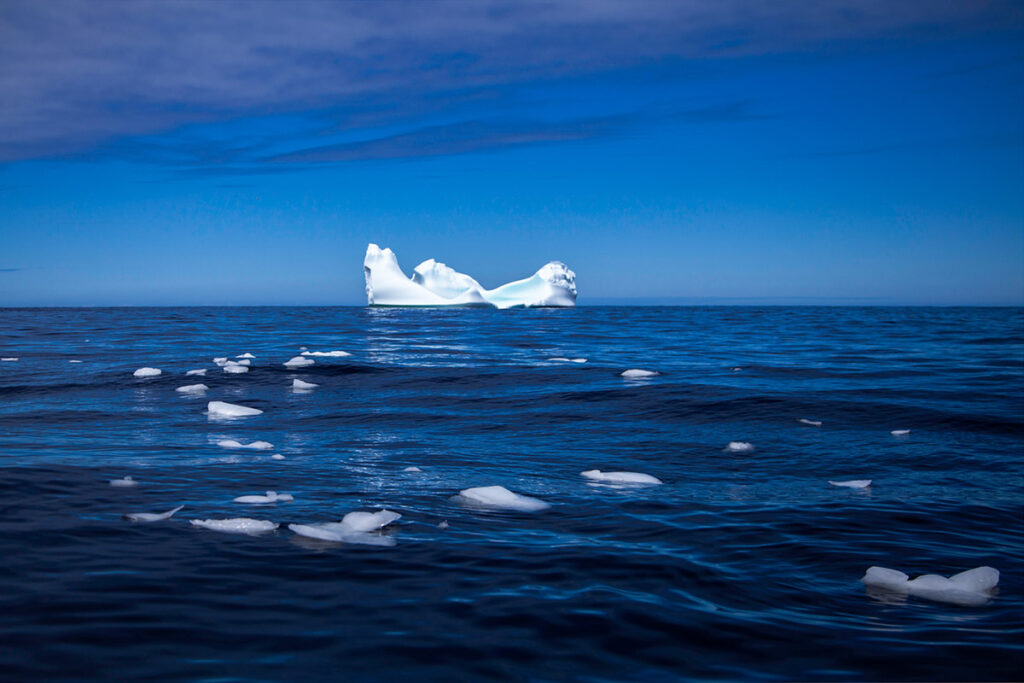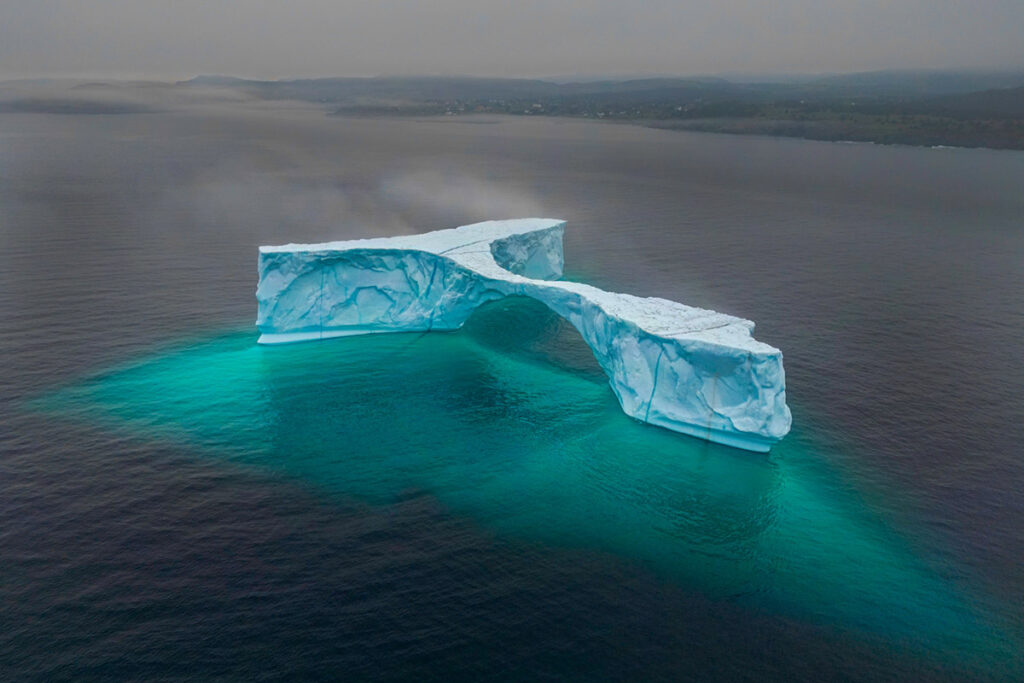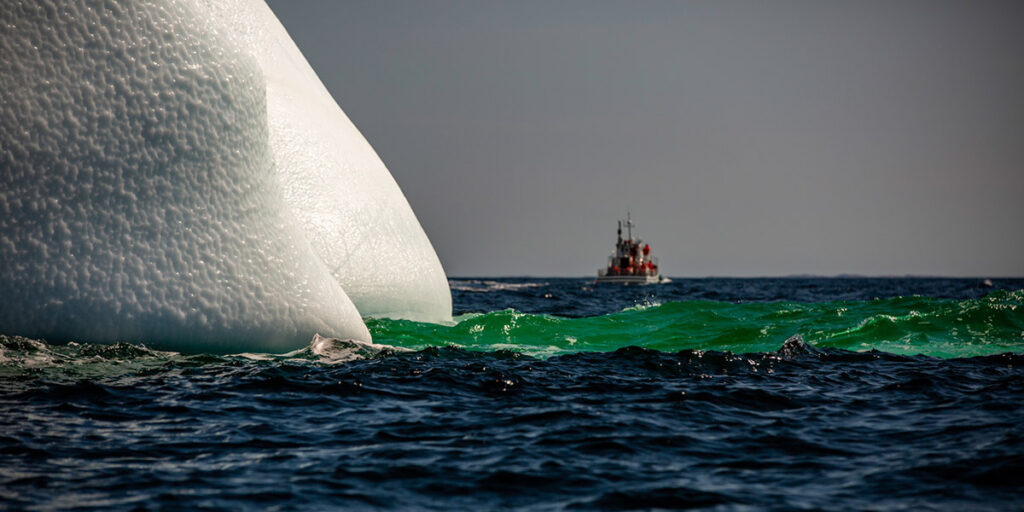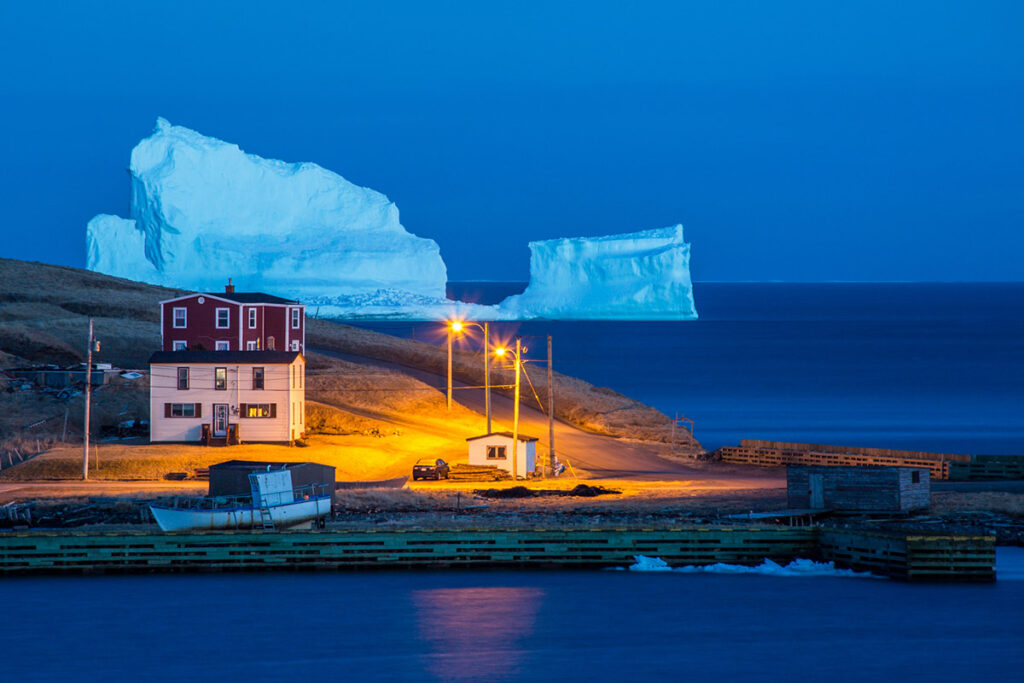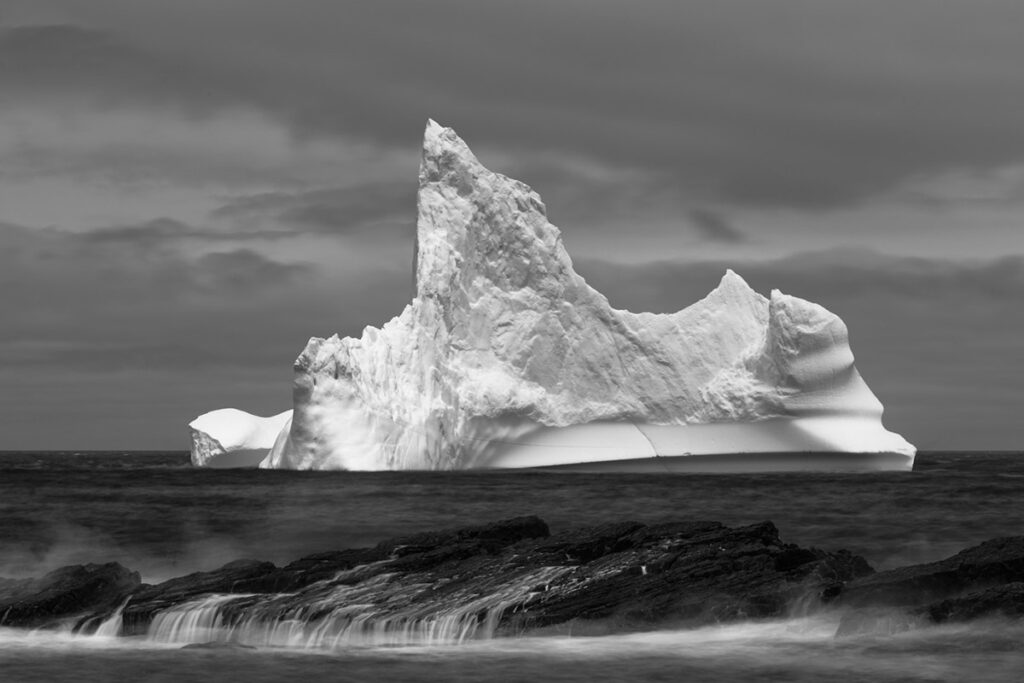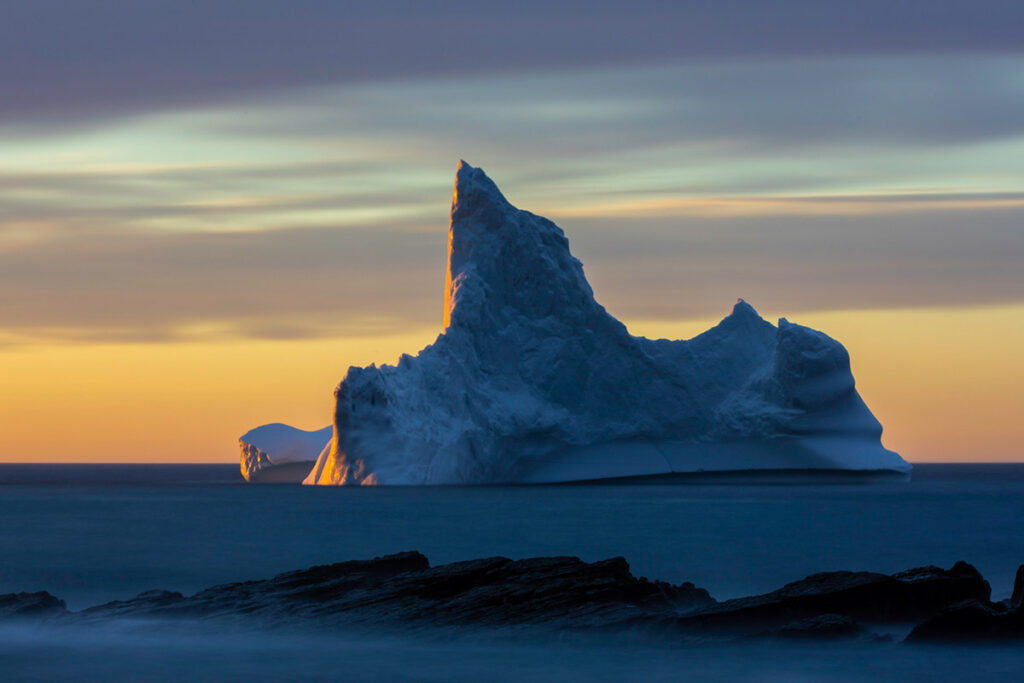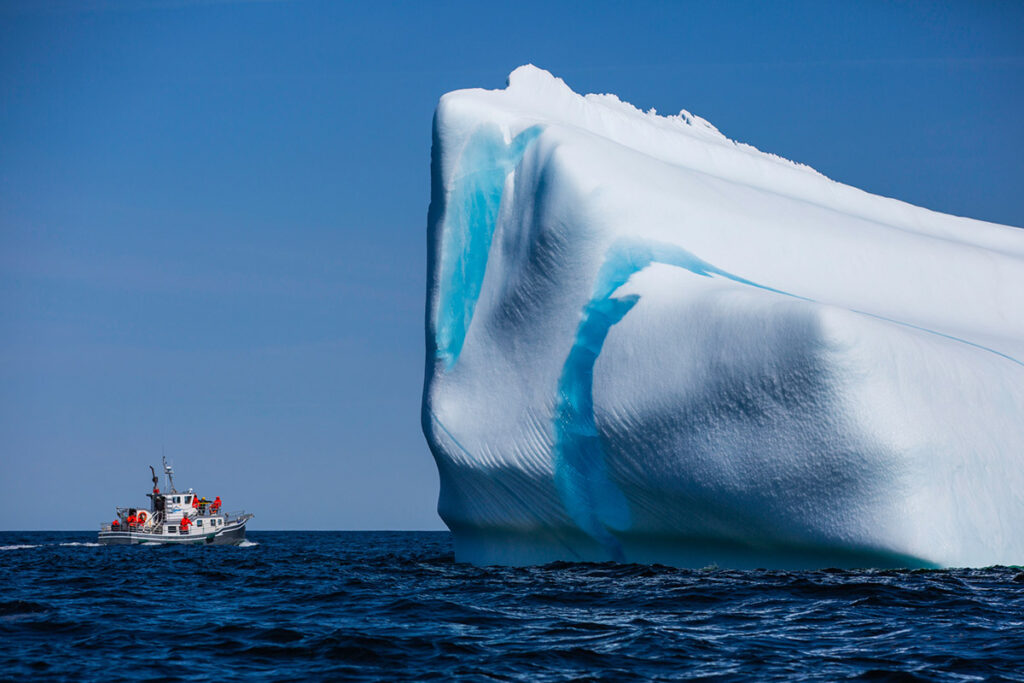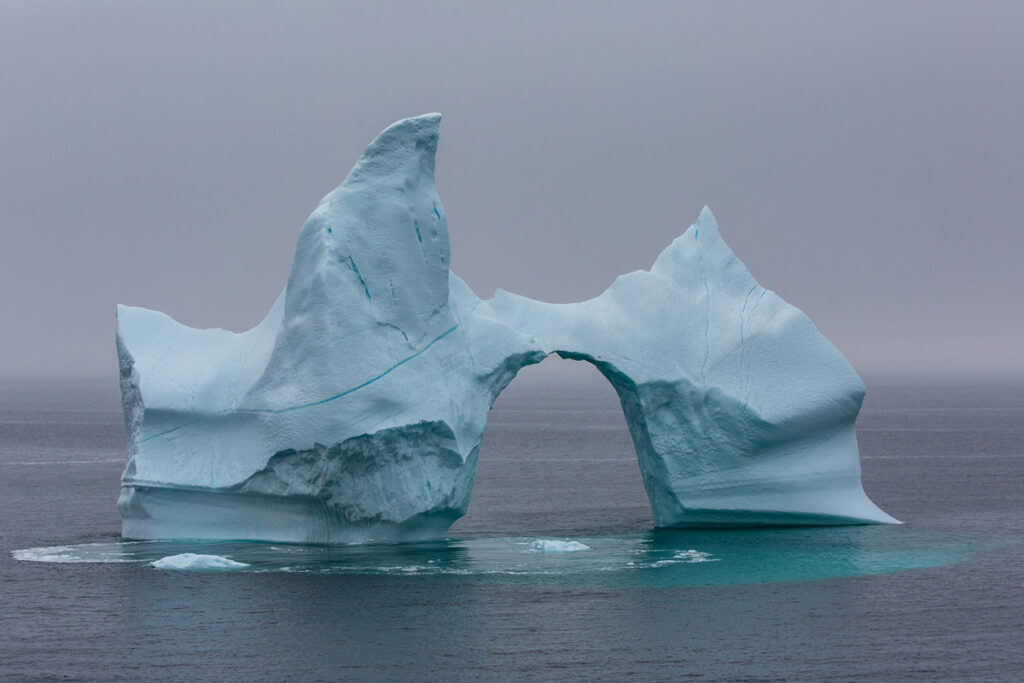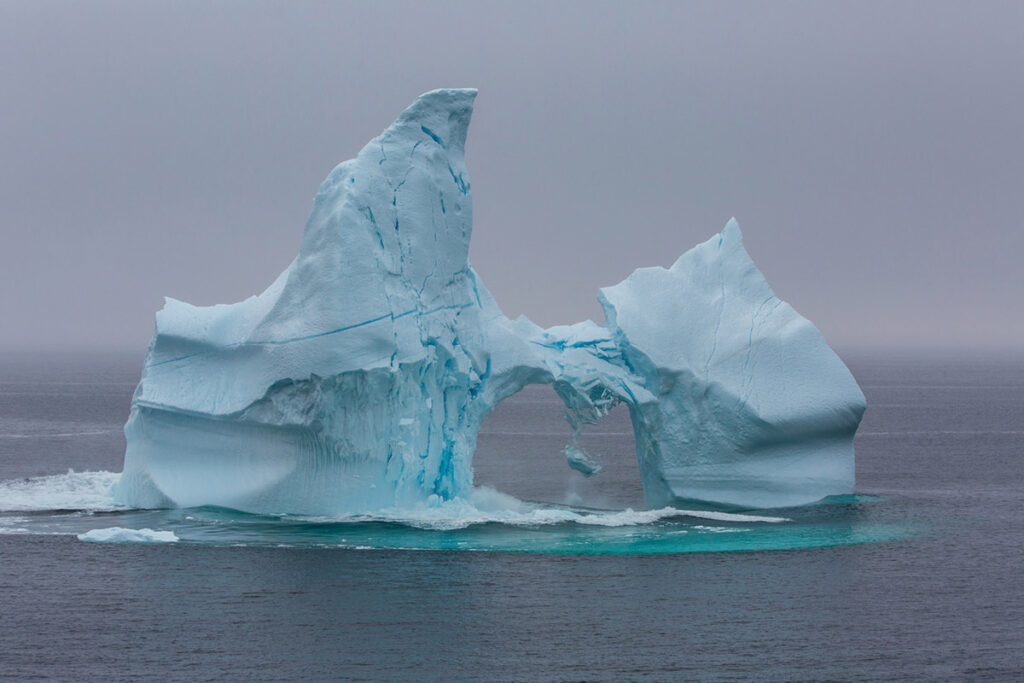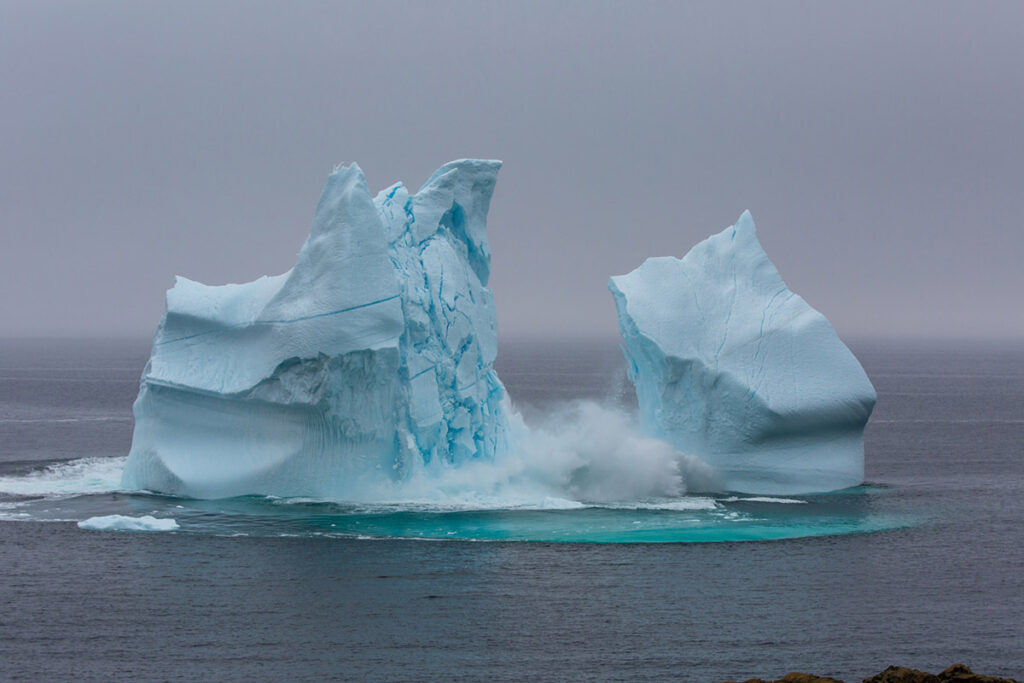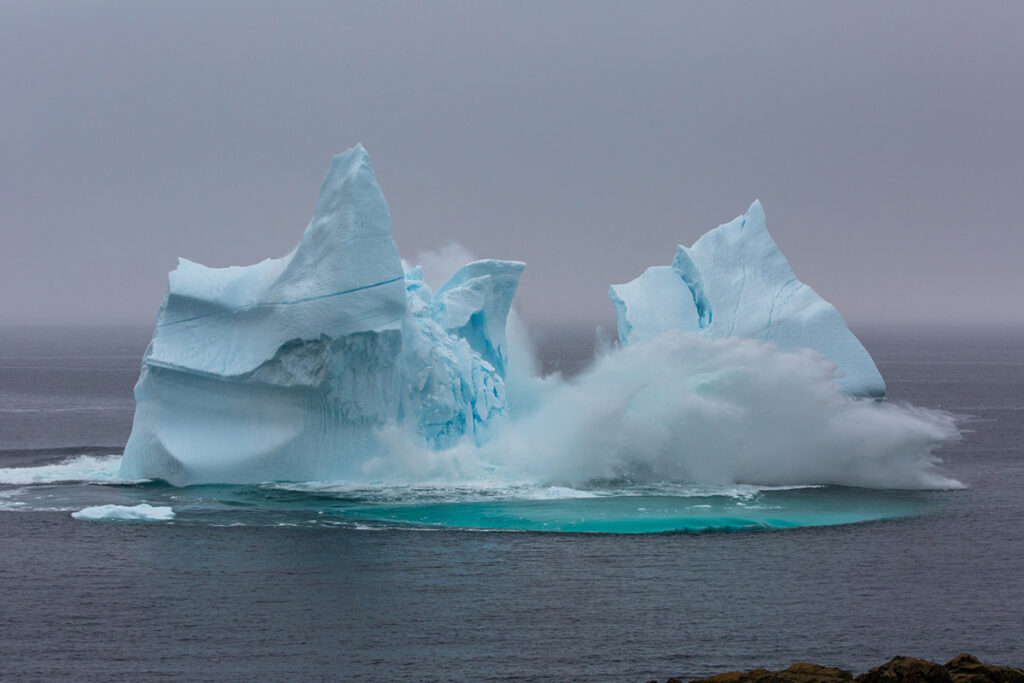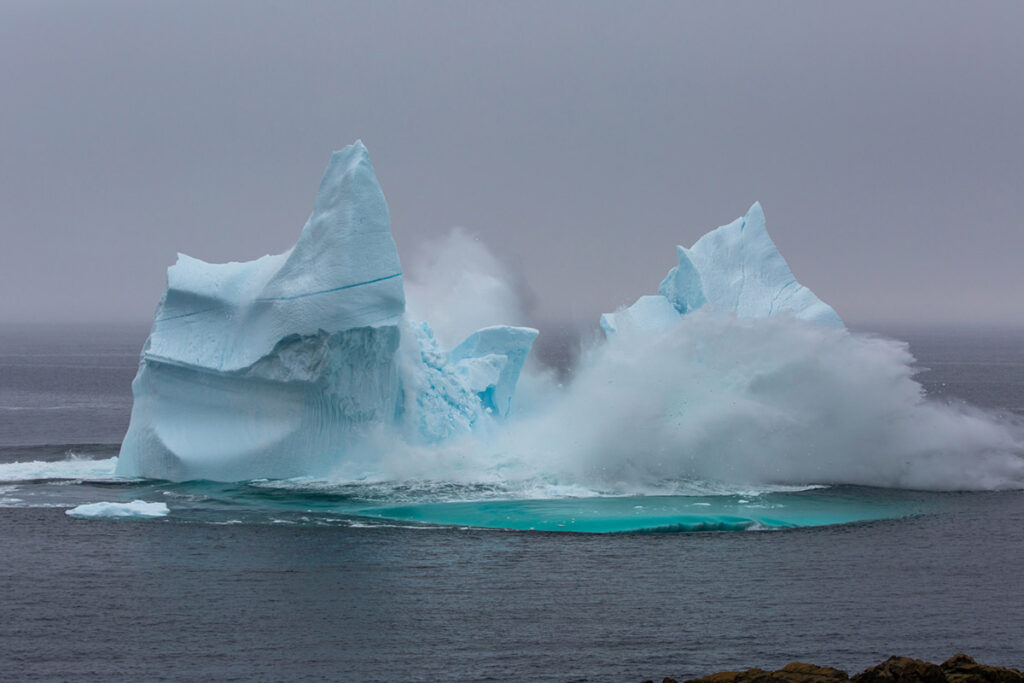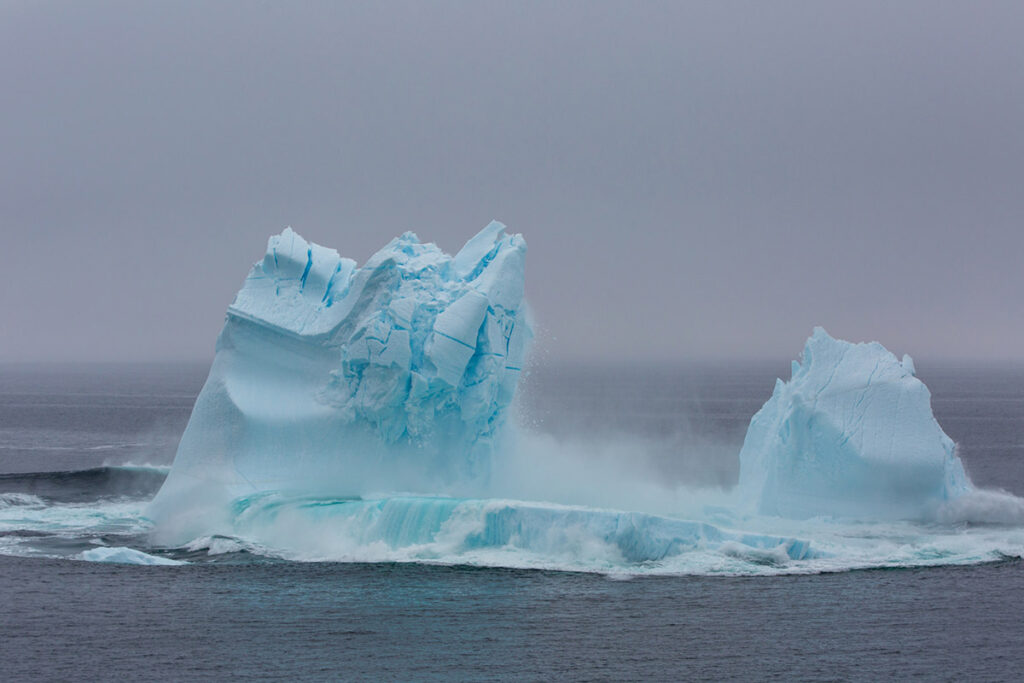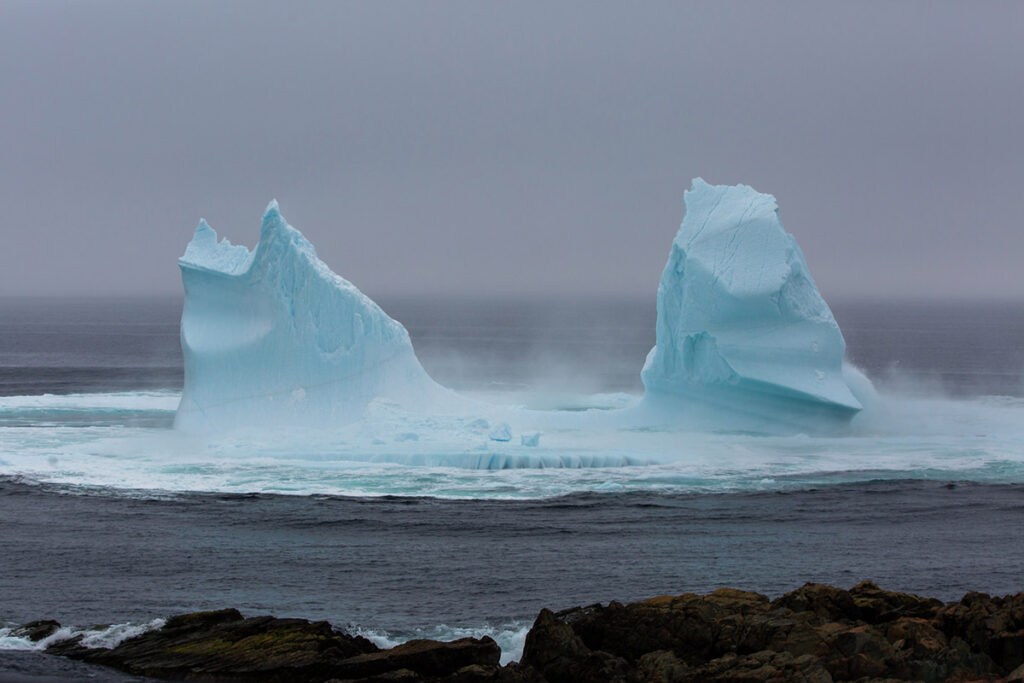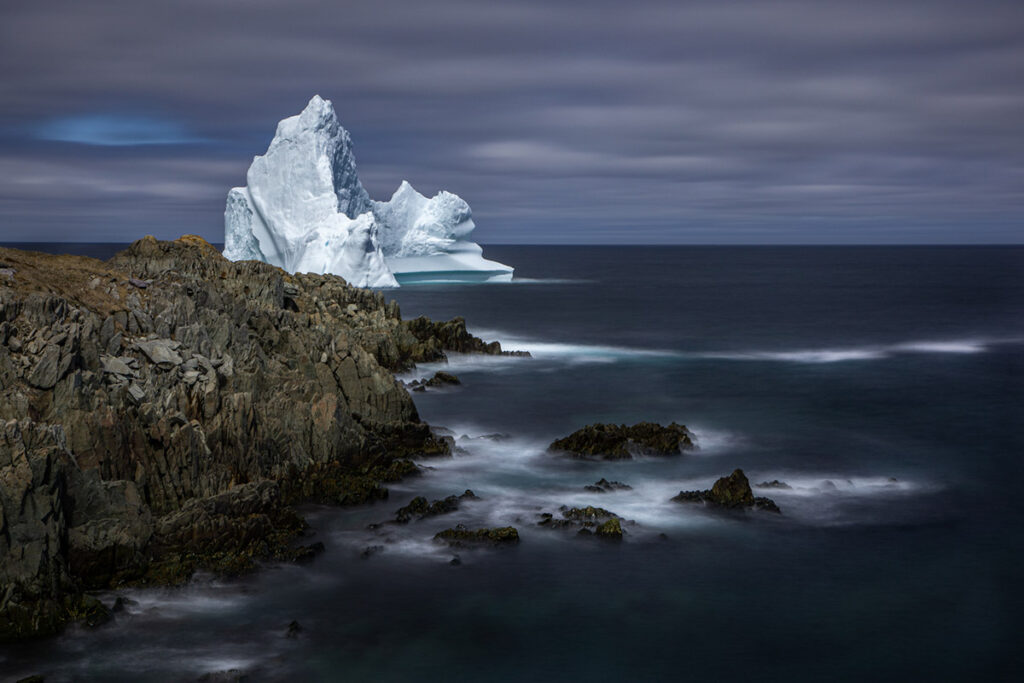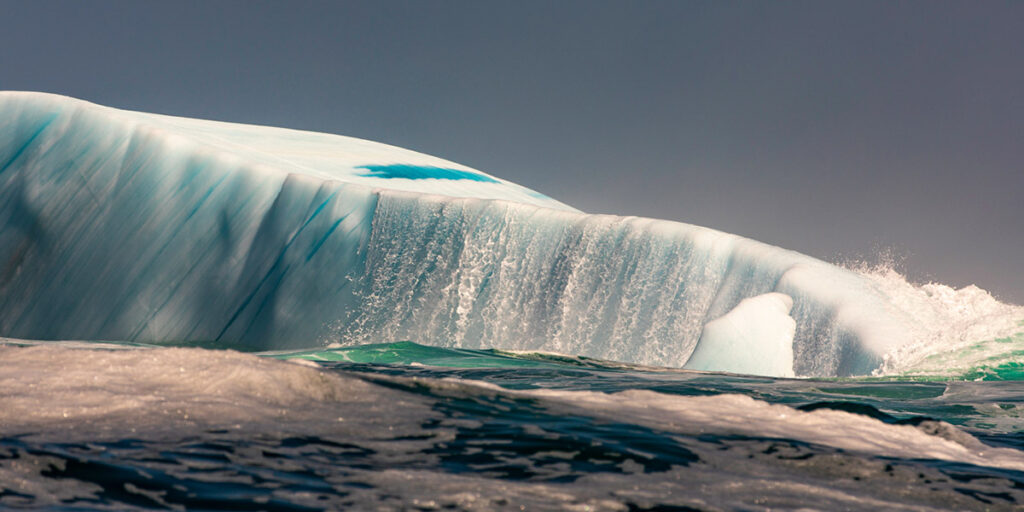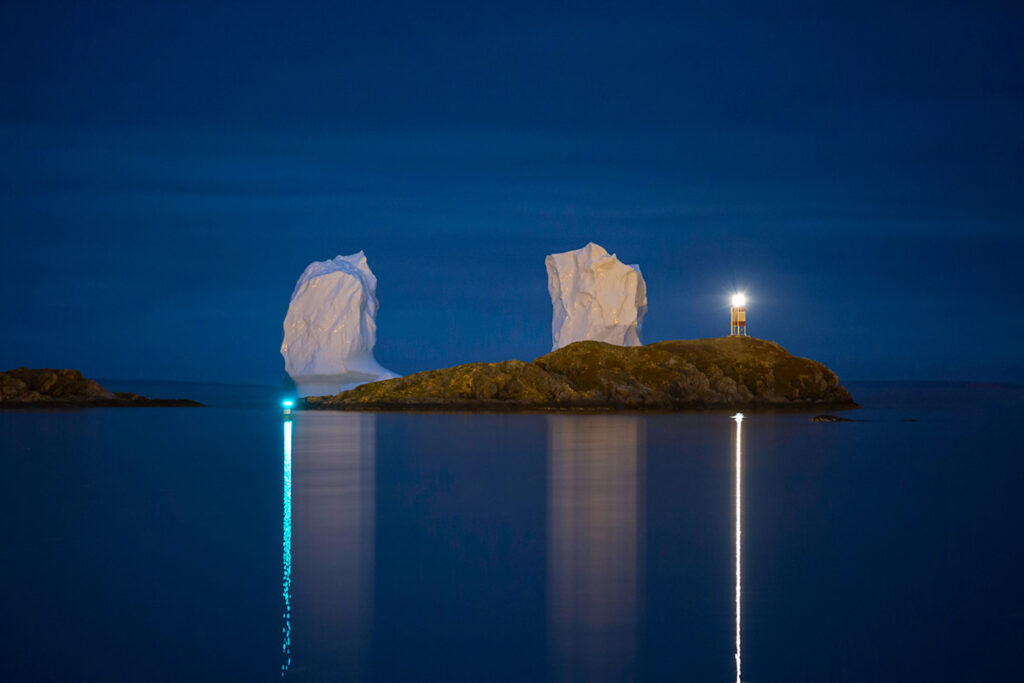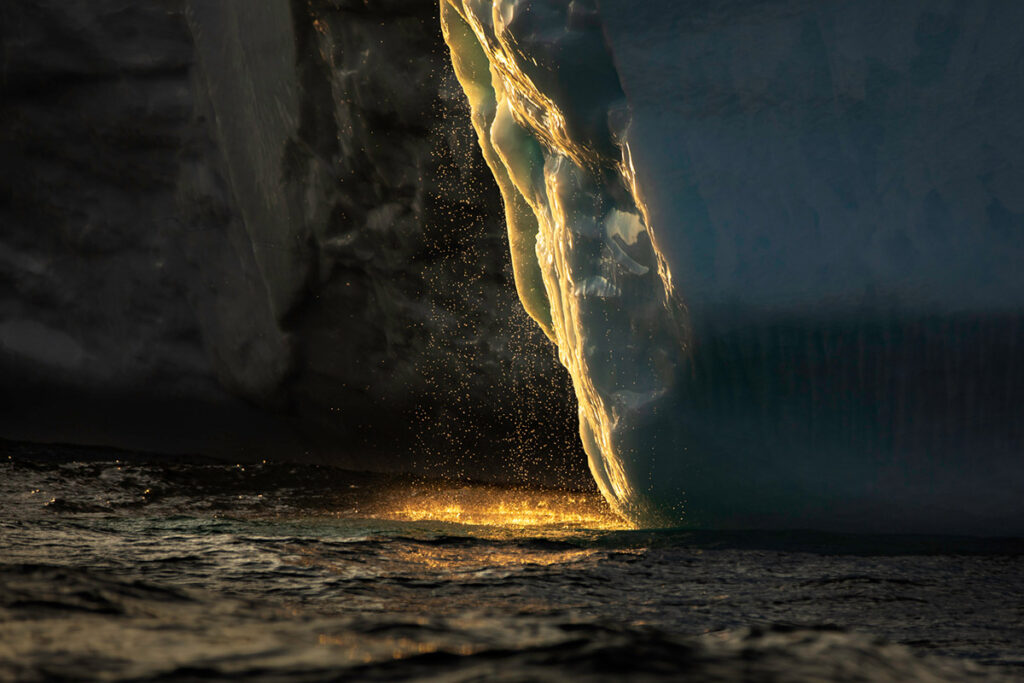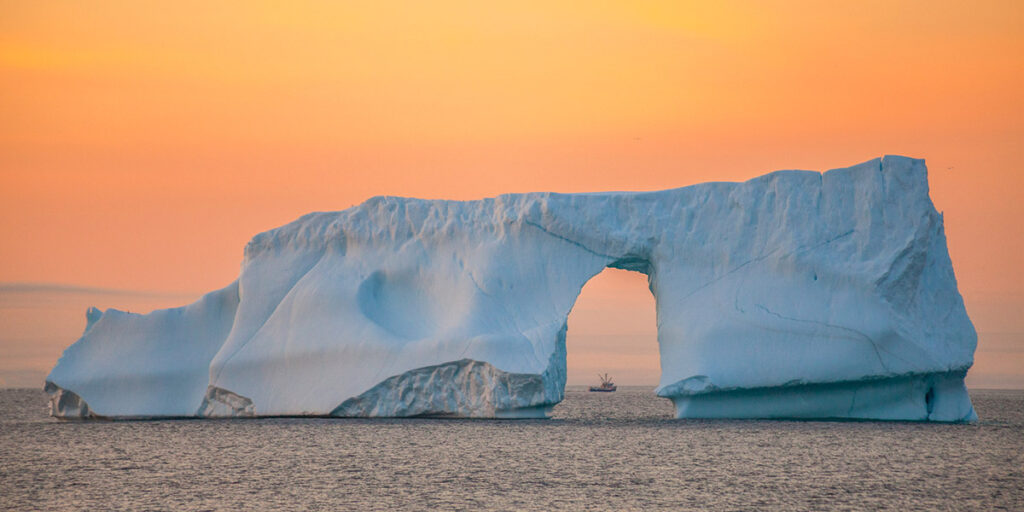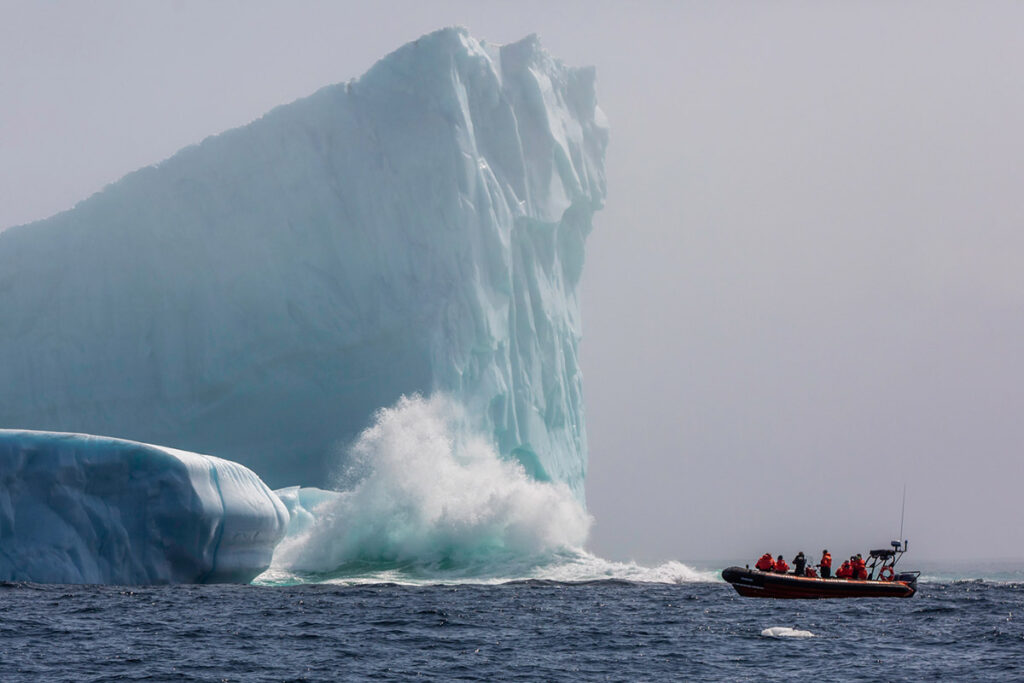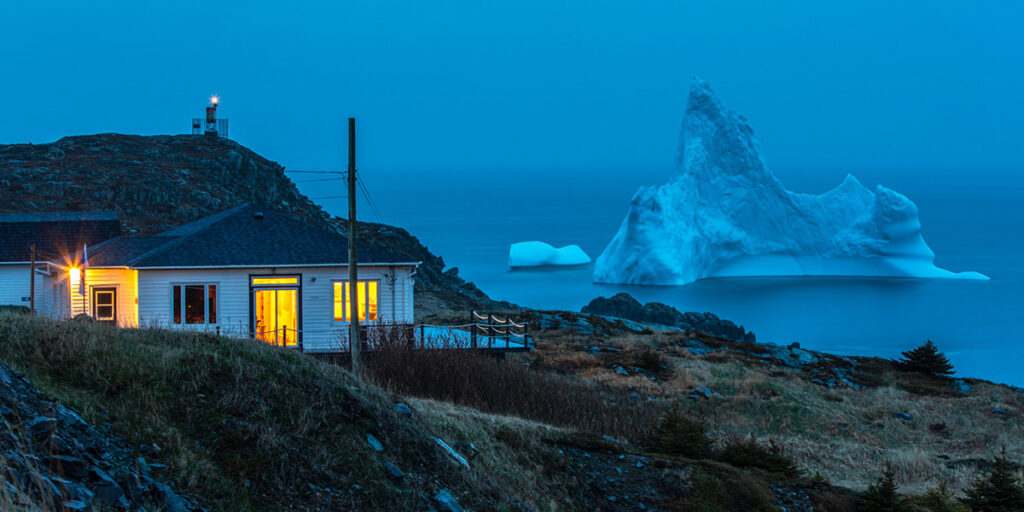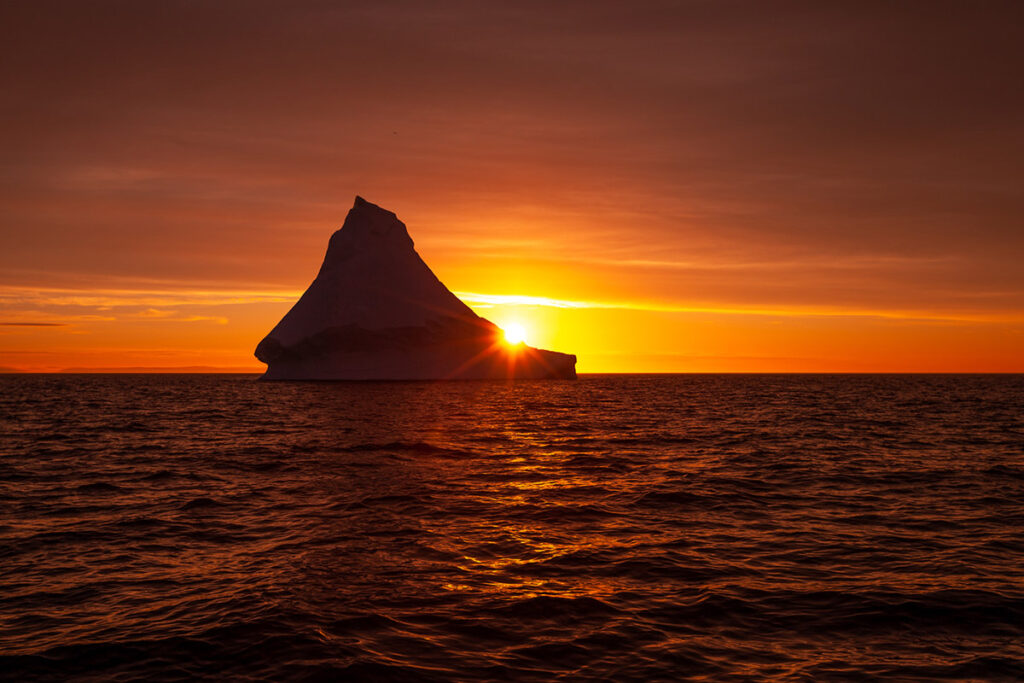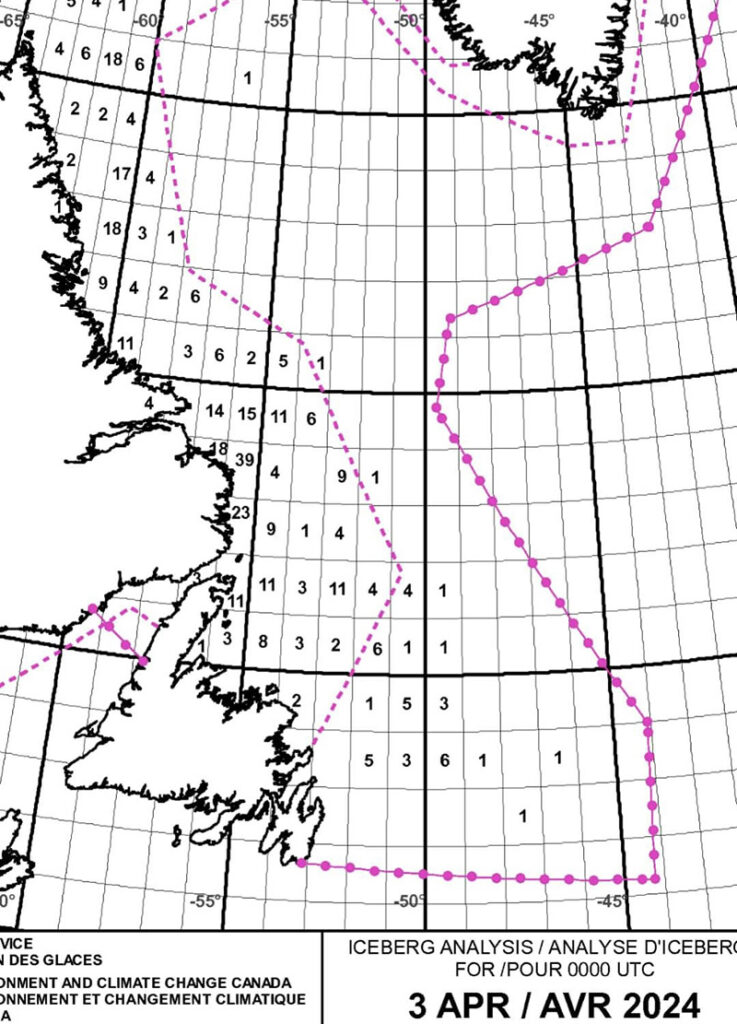I have been fascinated by icebergs since I was a little boy living on the coast of Newfoundland. To this day, I am still in awe of their raw beauty, as each iceberg is unique like a snowflake. They are carved by the sunshine, rocks, and motion of the ocean, transforming them into works of art that keep people flocking to Newfoundland’s east coast.
Through the years, I have learned that icebergs come from Greenland and take up to two years to travel down the Newfoundland coast. They break off from Greenland’s ice sheet and then their appearance is determined by ocean currents and wind. Our team at Newfoundland Photo Tours has local connections and years of experience, so we keep tabs on any icebergs that visit our coastline.
Photographing icebergs is a lot of fun because they are so unpredictable, and they look different in various conditions and angles. For a basic shot, the right composition can make it interesting. Sometimes just the shape of the iceberg can lead to a great picture, whether it be an iceberg that looks like a statue or one with an arch.
When photographing icebergs, a great option is to include something in the image that provides a sense of scale, like a boat or wildlife. If the iceberg is close to land, then you have lots of options where you can use houses, boats, sheds, or pretty much anything.
Remember that icebergs are white, so on a sunny day, there is a good chance they will be overexposed. Therefore, it’s crucial to underexpose on bright sunny days. The great thing about under-exposing on sunny days is that the blues of the ocean and sky will be richer and deeper blue. While most people like to photograph icebergs under the sun, it’s only during an overcast day that you will truly see the details and colour of the iceberg.
Sunset is an awesome time for photographing icebergs because you get amazing colour, shadows, and texture, which enhances any iceberg image. You can even work with the sun to get a sunburst off the edge of the iceberg as well.
One of the most important things when photographing icebergs is to focus on the details. Icebergs have so many features that only when you look at the detail do you see the whole picture. Photograph the details of the ice from the ocean washing over it to the colour underneath. Photograph the melting glacier water falling off it during sunset. When you start discovering the features of the iceberg, then you will see the big picture and be able to become more creative in your photographs.
My favourite time to photograph icebergs is during blue hour, which is just before sunrise or after sunset. You may find an iceberg that is close to shore with some streetlights nearby. The contrast of the warm glow in the lights versus the cool blues of the sky, ocean, and iceberg provides impact to your photos.
Long exposure of icebergs can be challenging because it depends on the movement of the iceberg. If an iceberg is well grounded on the shoreline, then there is not much movement so you can open your aperture for a while to get that smooth ocean look around the berg. However, if the iceberg is moving with the waves, then it will be impossible to get a sharp iceberg picture while getting the silky-smooth look of the ocean. Of course, you will need an ND filter if you are planning on a long exposure during the day. I recommend looking for those grounded icebergs if you can.
Photographing icebergs at night is challenging, and you need to know some tricks to focus at night. If it’s dark, your camera will not be able to focus on the iceberg, so you can try manual focus or bring a flashlight. If you have a flashlight, you can shine the light on the iceberg and then autofocus. After focusing, switch your camera lens to manual focus and you are good to shoot for as long as you don’t change the focal length. Of course, there are several tricks to photographing them in the dark, and this is just one of them.
Witnessing an iceberg breaking up is a special treat, but you need to be in the right place at the right time. If you do get the chance, then a high shutter speed (over 1/2500 sec) and high frame rate is the way to go. Just point and hold down on the shutter button while you hear the loud bangs and crashes and try to stay focused on the iceberg because of all the excitement. Once you witness or photograph this, it will be something that you won’t forget.
With the introduction of drones, we have a whole new perspective on icebergs. The view from above provides the true size of these icebergs because we get a view of the bigger part that lies beneath them. As mentioned earlier, icebergs come down the east coast of Newfoundland and may show up on any shore.
Icebergs in Newfoundland can be found on any shoreline, as they come down the east coast of the province. To locate them, the government of Newfoundland and Labrador runs a website called Iceberg Finder, which provides information on their whereabouts. However, this website relies on user-generated content, so some sightings may be outdated.
Alternatively, local guides from Newfoundland Photo Tours have years of experience and connections to help you find these natural wonders. We also have partnerships with boat tour operators that can provide you with an up-close and safe experience with the icebergs, while keeping a safe distance since they can be dangerous when they break up. The 2024 season looks promising, as there are many icebergs visible along the coast as of April 3rd.
We have provided some tips on photographing these magnificent ice formations, but this is just the tip of the iceberg. If you have any questions, please don’t hesitate to contact us at info@newfoundlandphototours.com or visit www.newfoundlandphototours.com.
About the Author – Michael Winsor
Michael is an international award-winning professional photographer and owner of Newfoundland Photo Tours on the east coast of Canada. He has been exploring and photographing our natural world for year.
Michael has worked with PHOTONews for a cover story on Newfoundland & Labrador. He has also worked Canadian Geographic on several stories and other magazines such as Macleans, etc.… He is an ambassador for Newfoundland and Labrador through working with Newfoundland Tourism and conducting presentations by showcasing the province through my images.
Michael has won many awards including “Wildlife Photographer of the Year” and “Best Landscape of the Year” with Canadian Geographic. He has been fortunate to have a best-selling photography book that is on its second print as well. Perhaps the best thing that my work has been recognized for is having one of my images printed on an international Canadian postage stamp that was printed over 16 million times. Most recently, He has just been selected to represent Team Canada at the World Photographic Cup in Singapore.
www.newfoundlandphototours.com
Facebook: www.facebook.com/WinsorPhotos
Instagram: https://www.instagram.com/newfoundland_photo_tours/
Twitter: https://twitter.com/WinsorM



